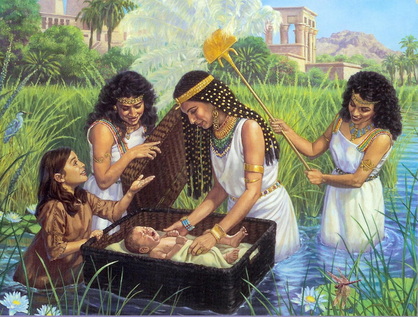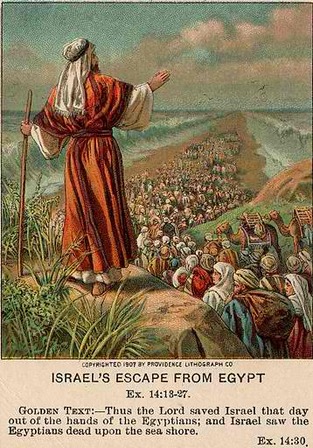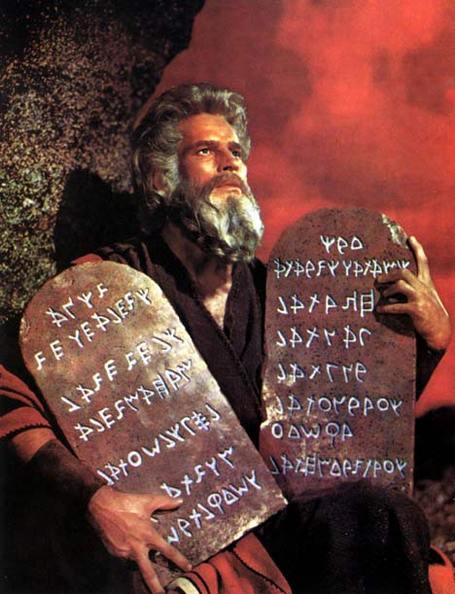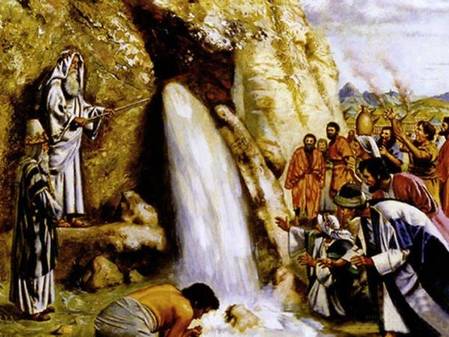The Book of Exodus

Exodus is a Latin word (derived from the Greek) that means "exit," "departure," and describes the greatest miracle in the Old Testament record of Israel's history - the "going out" from Egypt and slavery. While the story of the Israelites began with Abraham in Genesis, Exodus is the history of their early years as God's chosen nation, commited to Him according to the terms of the Mosaic covenant given at Mount Sinai. The majority of Exodus was likely written by Moses and describes his life and calling. Exodus lays the foundation for a theology of God's revelation of His name, His attributes, His redemption, His law, and His worship. It also reports the appointment and work of the first covenant mediator (Moses), describes the beginning of the priesthood, defines the role of the prophet, and relates how the ancient covenant relationship between God and His people came under a new administration (the Sinai covenant).

4 Main Highlights of Exodus
I. Preparation for Israel's Deliverance from Bondage (1:1-4:31)
II. Israel's deliverance from Egyptian bondage (5:1-18:27)
A. Pharoah's resistance and the Lord's reassurance (5:1-6:27)
B. Plagues on Egypt (6:28-12:36)
C. The Exodus: from Egypt to Mount Sinai (12:37-18:27)
III. Covenant at Sinai (19:1-24:18)
IV. The tabernacle for worship (25:1-40:38)
The Hebrew translation of the word "law" is torah, which comes from a verb which means "to teach, instruct." The establishment of the 10 Commandments at Mt. Sinai was to teach the nation (Israel) how to live within the structure of the covenant.
After the ten general instructions, God gave Moses a long series of case studies which added up to over 600 more laws.

Keeping the law did not establish a relationship between God and His people; it provided instructions on how to live within the relationship. The relationship was already established with Abraham and reinforced through the blessing line.
Chapters 1-7 of Exodus introduce Moses and the Israelites in bondage in
Egypt. This setting is approximately 400 years after Joseph and his family were living in Goshen at the end of Genesis. God protects baby Moses and spares his life, as Moses is adopted by Pharaoh’s daughter and is raised as an Egyptian. God calls Moses with a special revelation, through a burning bush, to release His people from slavery in Egypt. Moses obeys, and with his brother Aaron, confronts Pharaoh to let God’s people go free, but Pharaoh ignores the warning.
In Chapters 7-13, Moses, through the power of God, releases 10 plagues of
different sorts on the land of Egypt which included turning all the water to blood, plagues of insects, boils, and hail, and finally, the death of every
first-born son. This included the death of Pharaoh’s eldest who would have someday inherited the kingdom of Egypt. However, the Israelites obeyed God and followed the ordinance of the Passover, and God spared them.
Chapters 14-18 describe the Exodus or “Exit” from Egypt. Pharaoh could
no longer endure the plagues that God poured on Egypt and himself and allows the Israelites to leave. Moses and the Israelites depart and journey as far as the Red Sea. Shortly after, Pharaoh changes his mind and pursues them, but God destroys his army with the sea.
Chapters 19-24, Moses presents all of the Laws to all the people at Mt. Sinai as God commanded.
From chapters 25-40, Moses gives the Israelites the tabernacle, priest and
worship instructions.
The tabernacle was constructed for worship, sacrificial offerings and housing the law. The room that held the ark of the covenant, where the law was kept, was called the Holy of Holies. No one was allowed into the Holy of Holies except the high priest on the Day of Atonement - and then only after extensive ritual cleansing. The Day of Atonement (Yom Kippur) was the day of the year when the high priest offered a bull on behalf of the entire nation.
The Foreshadowing of Jesus

Two stories of Moses and the Israelites described how they were miraculously given water from rocks in the desert. The first occurred at Rephidum (Exodus 17:1-7) and the second at Kadesh (Numbers 20:1-13). In 1 Corinthians 10:4, Paul identified the experience of the Israelites as an encounter with Christ; "and all drank the same spiritual drink, for they were drinking from a spiritual rock which followed them; and the rock was Christ." Paul was saying the rock was to them what Christ is to us, a source of sustenance.
continue to Leviticus....
continue to Leviticus....